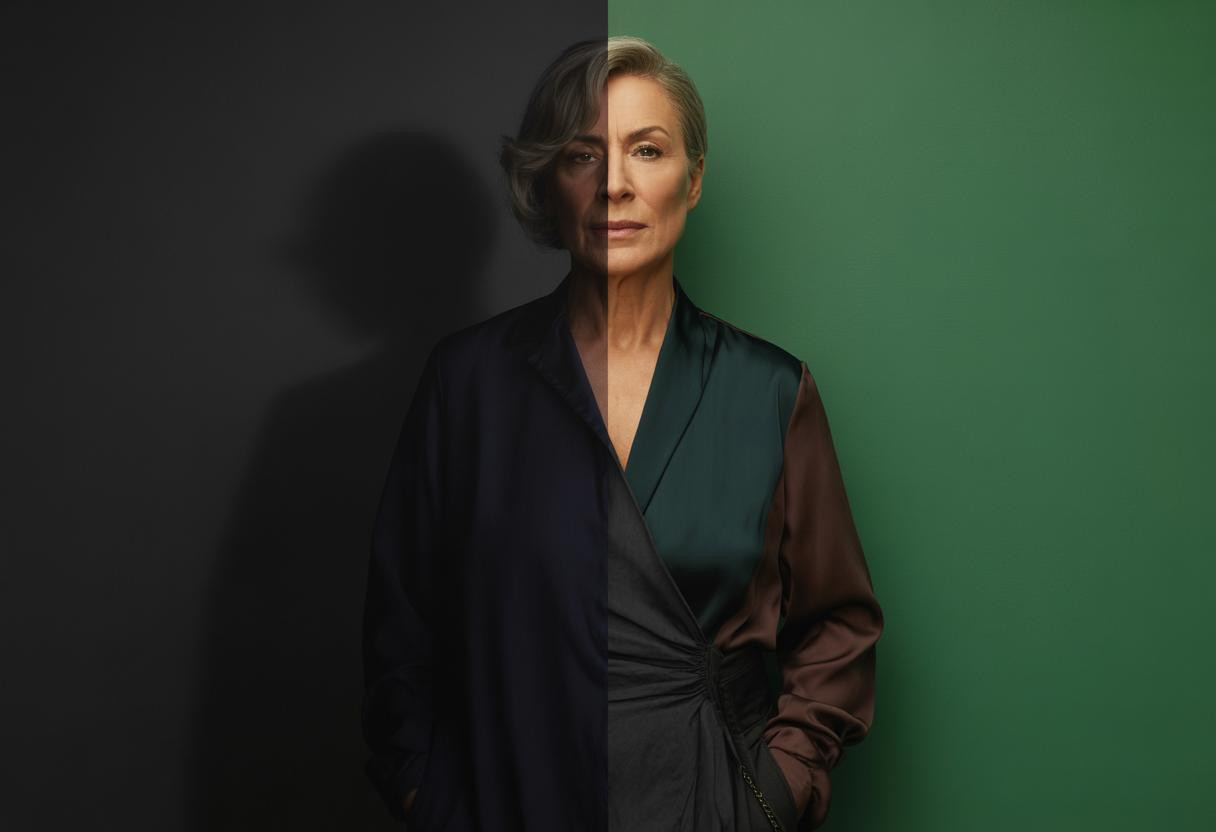After decades of reaching for black because it felt safe and slimming, I started noticing something unsettling in dressing room mirrors. The color that once made me feel polished now seemed to drain the life from my complexion, creating harsh shadows around my eyes and making my skin look tired before I’d even started my day.
The truth is, black can be too stark against mature skin, especially as our natural coloring softens with age. But the solution isn’t to abandon sophisticated neutrals entirely—it’s about discovering which colors actually enhance your natural radiance at this stage of life.
Why black stops working after 45
As we age, our skin tone naturally becomes more muted, and the high contrast of pure black can create an unflattering effect. Think of it like adjusting the contrast on a photograph—what once looked crisp now appears overexposed. Softer alternatives maintain elegance while working harmoniously with your evolving complexion.
The key lies in understanding your undertones. Cool undertones benefit from navy or charcoal, while warm undertones shine in rich chocolate brown or deep forest green.
The sophisticated neutrals that replace black beautifully
Charcoal gray offers the same slimming effect as black but with a softer edge that won’t compete with your natural coloring. For evening events or professional settings, it provides the same authority without the harshness.
Deep navy works like a more flattering version of black, especially beautiful with silver jewelry and white accents. It’s particularly stunning for travel pieces since it hides wrinkles while looking polished.
- Rich chocolate brown – warms the complexion and pairs beautifully with gold accessories
- Deep forest green – sophisticated alternative that complements most skin tones
- Charcoal plum – adds subtle color while maintaining the slimming effect of dark neutrals
How to transition your wardrobe without starting over
Start with one key piece in your new signature neutral. A well-fitted blazer in charcoal or navy can instantly update your existing wardrobe when layered over current pieces. This approach lets you test how the color feels without a complete overhaul.
My friend Sarah, 52, replaced her black trench with a navy version and was amazed at how many compliments she received. The softer color made her look more approachable while maintaining her professional edge.
Colors that add life without looking juvenile
Dusty rose and soft sage bring warmth to your complexion without appearing too youthful. These muted tones work beautifully in cashmere sweaters or silk blouses for everyday elegance.
Warm camel and rich burgundy offer sophistication with personality. A camel coat becomes your signature piece, while burgundy adds richness to your evening wardrobe.
Strategic color placement for maximum impact
Place your most flattering colors near your face through scarves, tops, or statement necklaces. This draws attention upward while allowing you to keep darker neutrals on the bottom half where they provide a slimming silhouette.
The right neckline in your perfect color can take years off your appearance more effectively than any anti-aging cream.
Building confidence in your new palette
The transition from black requires patience with yourself. Start with colors that feel like natural extensions of your personality rather than dramatic departures. Think of it as fine-tuning an instrument rather than learning to play an entirely new song.
- Test new colors in natural light before purchasing
- Notice which shades receive the most compliments
- Pay attention to how different colors make you feel throughout the day
A thoughtfully curated capsule wardrobe in your most flattering neutrals will serve you better than a closet full of black pieces that no longer enhance your natural beauty.
The most elegant women understand that true style evolves with grace. Embracing colors that celebrate who you are today, rather than clinging to what worked decades ago, is the ultimate act of self-respect and confidence.
